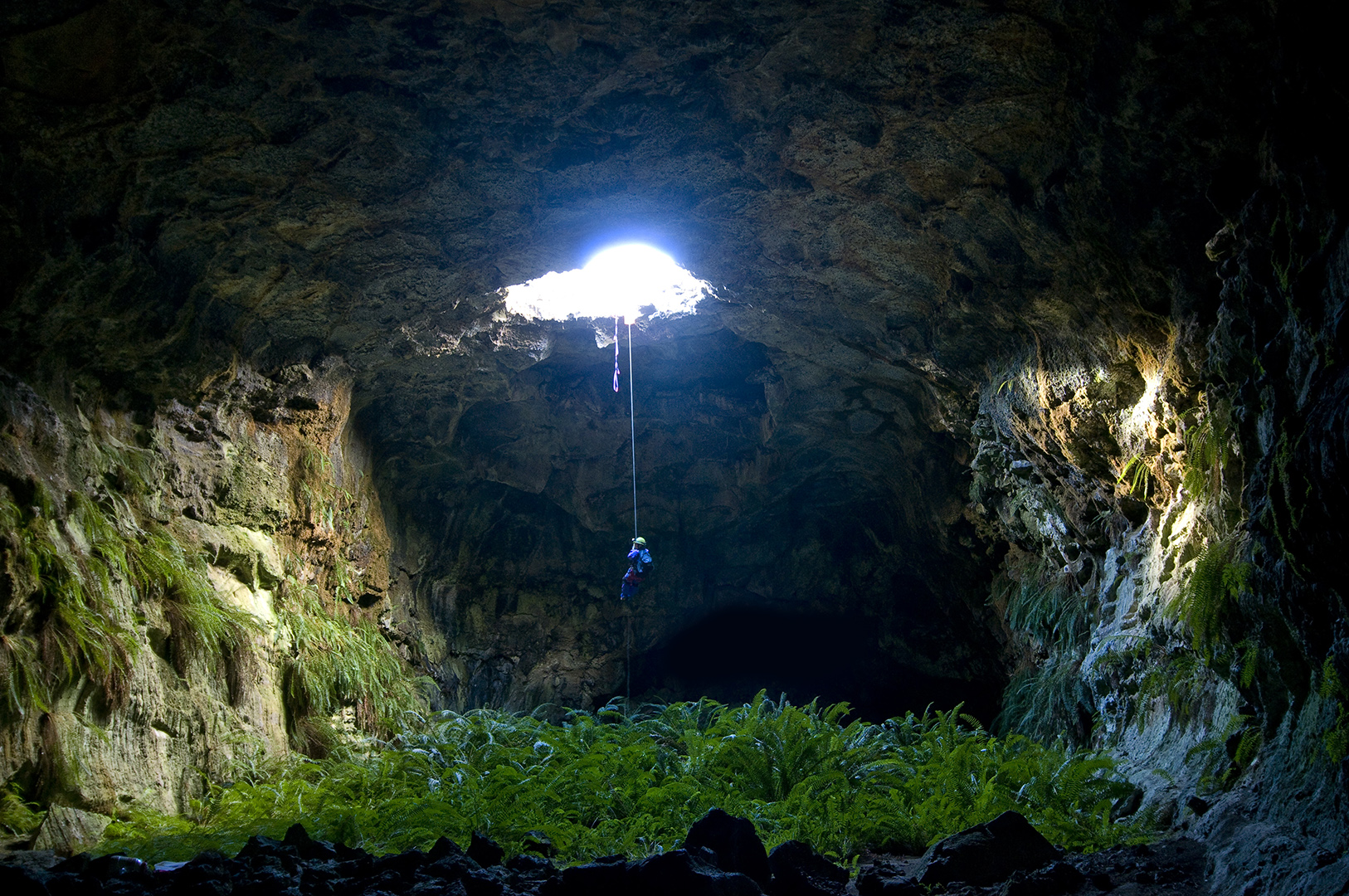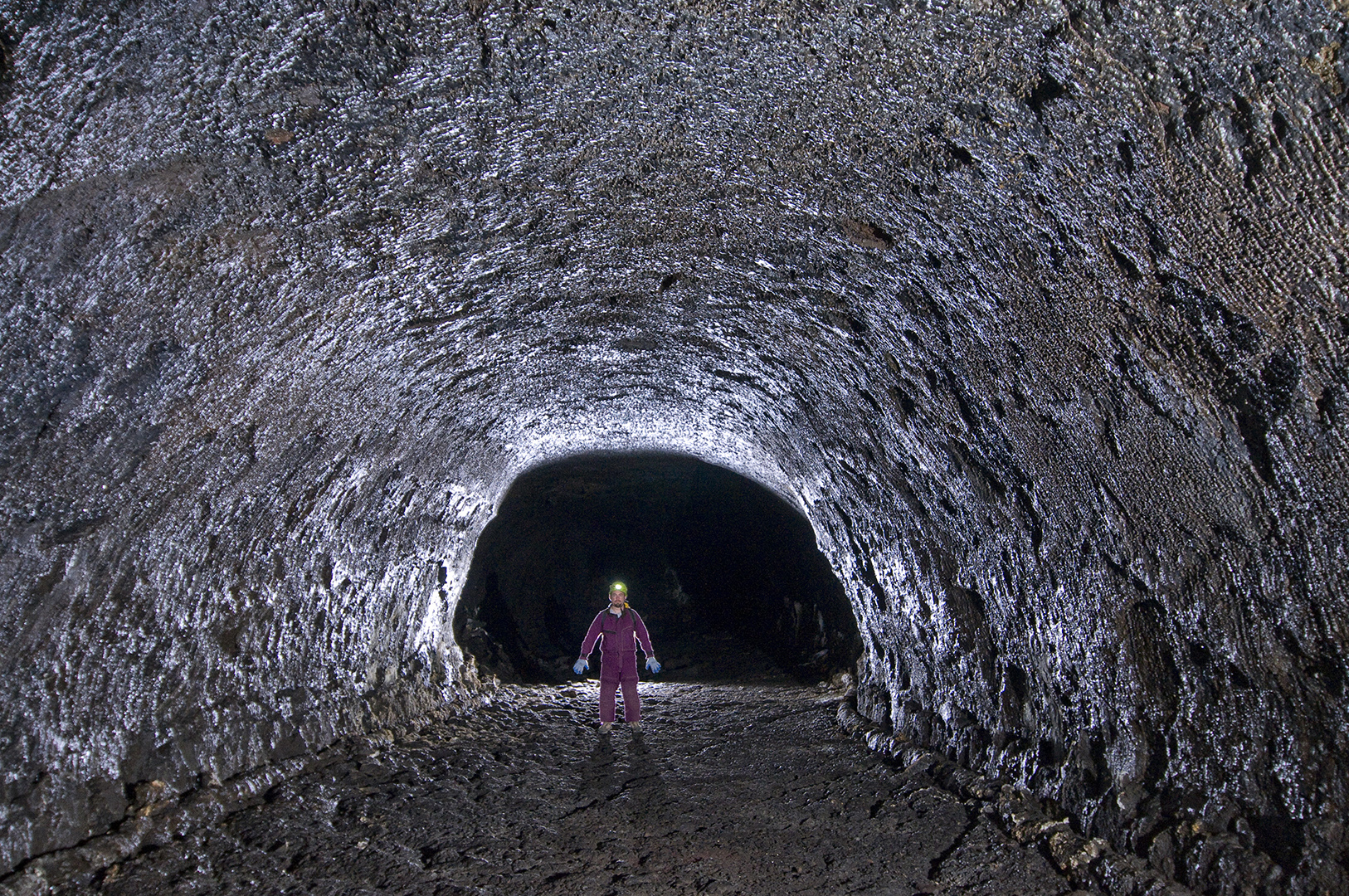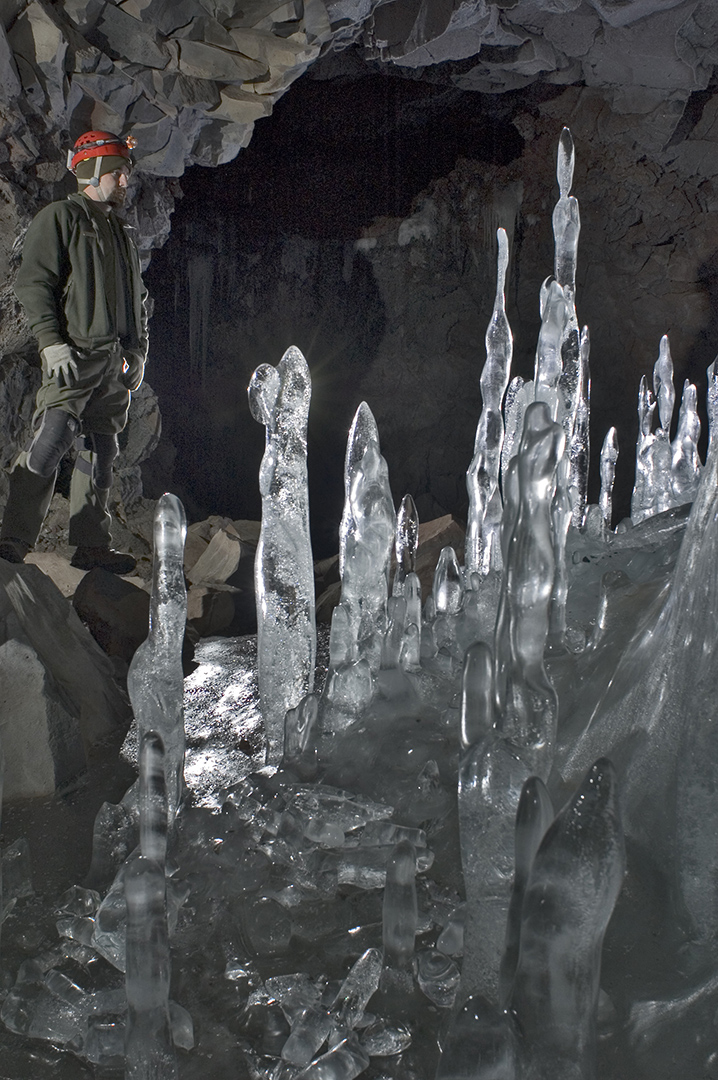
Caves made from molten rock
Lava tube caves form when flowing molten lava cools on top, creating a solid rock surface above and a hollow passage below.
Lava Caves
Lava varies in thickness, texture and chemistry. With the right type of lava, the top of the flow can cool and harden into stone. But, underneath, hotter lava keeps flowing until it eventually drains away leaving behind a cave passage. Lava tube caves are found across the state where ever there has been volcanic activity. There are thousands in the California desert, on the east side of the Sierra Nevada, in the Cascade Mountains and in the Modoc Plateau of northeastern California.
Often lava tubes can be cold air traps or can form high in the mountains where the average temperature is low. This can allow ice to form and grow inside of these caves with sometimes spectacular results in the form of large icicles, crystals and floors of blue ice.

Lava tubes vary. Some are single tunnels that meander along. Other are complex and braided with parallel passageways and many junctions and inter-connections. Some are very flat for long distances, others have multiple rope drops between levels. Some are sharp, unpleasant crawls, while others have big rooms or passages dozens of feet tall. Lava caves also have their own set of cave formations. There are many ceiling and floor features made by drips of molten rock. Floors can be sand, mud, broken rock or bedrock lava with patterns in the stone that resemble long strands of rope or hair. Lava tubes also contain their own suite of minerals. While cave walls are often dark, they can also be white or colorful with mineral deposits in many shades and hues.


Time and Lava Tubes
Lava tubes form quickly compared to limestone caves, which develop slowly over thousands to millions of years. In a single day, miles of lava cave passages can form. There are no volcanic eruptions making lava tubes in California today, but there have been many in the past, and there will be more in the future. Most of the lava tubes in the state are in lava flows that are anywhere from a few thousand to a few million years old.
Lava Caves and Native Americans
Lava tubes have been important to Native Americans in California. Captain Jack’s Stronghold, where the Modoc people fought the US Army, is a series of lava tube caves. Today, lava caves are still culturally important for multiple tribes across the state.
Wildlife and Lava Tubes
Wildlife often finds homes and shelter in lava caves. In dry regions of the state, in cool dark corners of tubes, pools of water may linger. In some cases, ice formed in the cave in the winter may replenish the pools for months into the summer. Many types of animals from mountain lions to lizards have been documented visiting these underground oasis to drink the water.
How can I see a California Lava Cave?
The best place to see lava tubes in California is one of the best places to see them in the world, Lava Beds National Monument in the northeastern corner of the state. Here, on the flanks of the Medicine Lake Volcano, hundreds of lave tubes have formed and many are open for park visitors to check out. It is a cave explorer’s paradise!